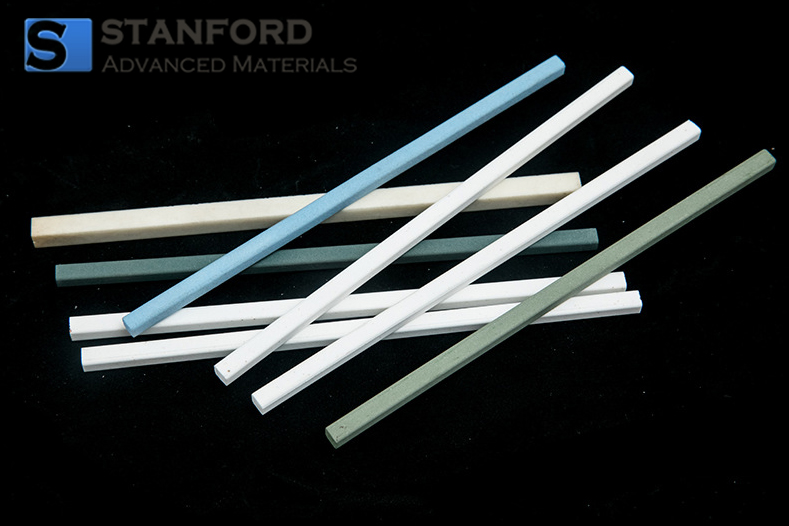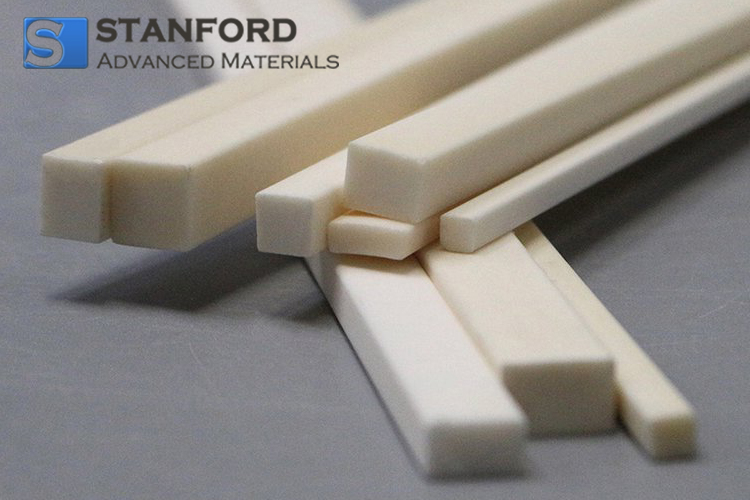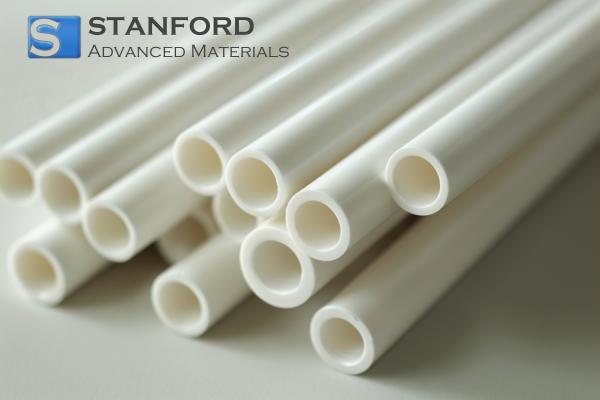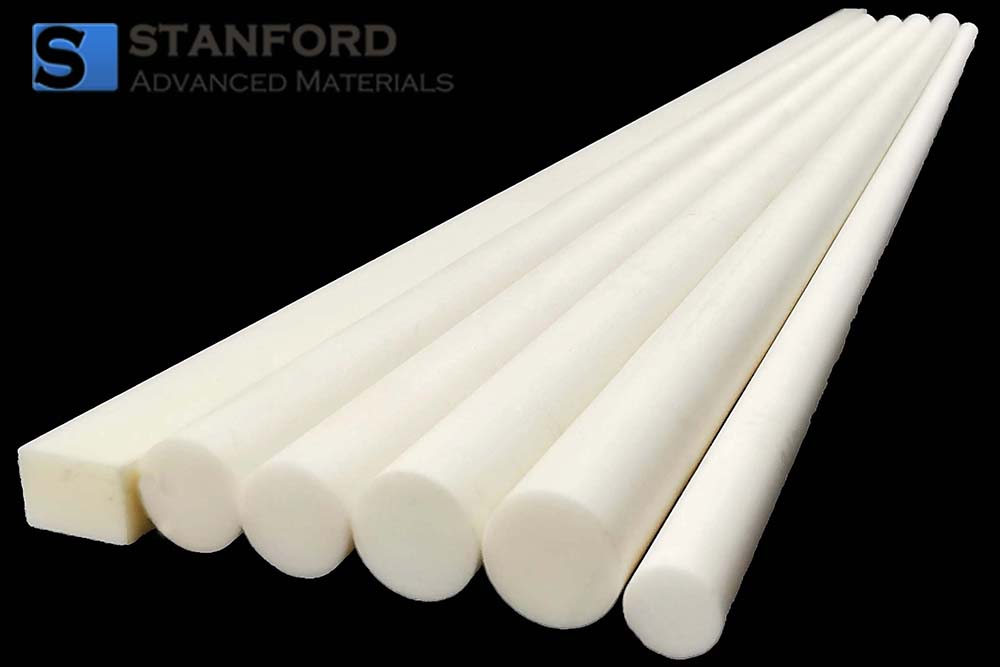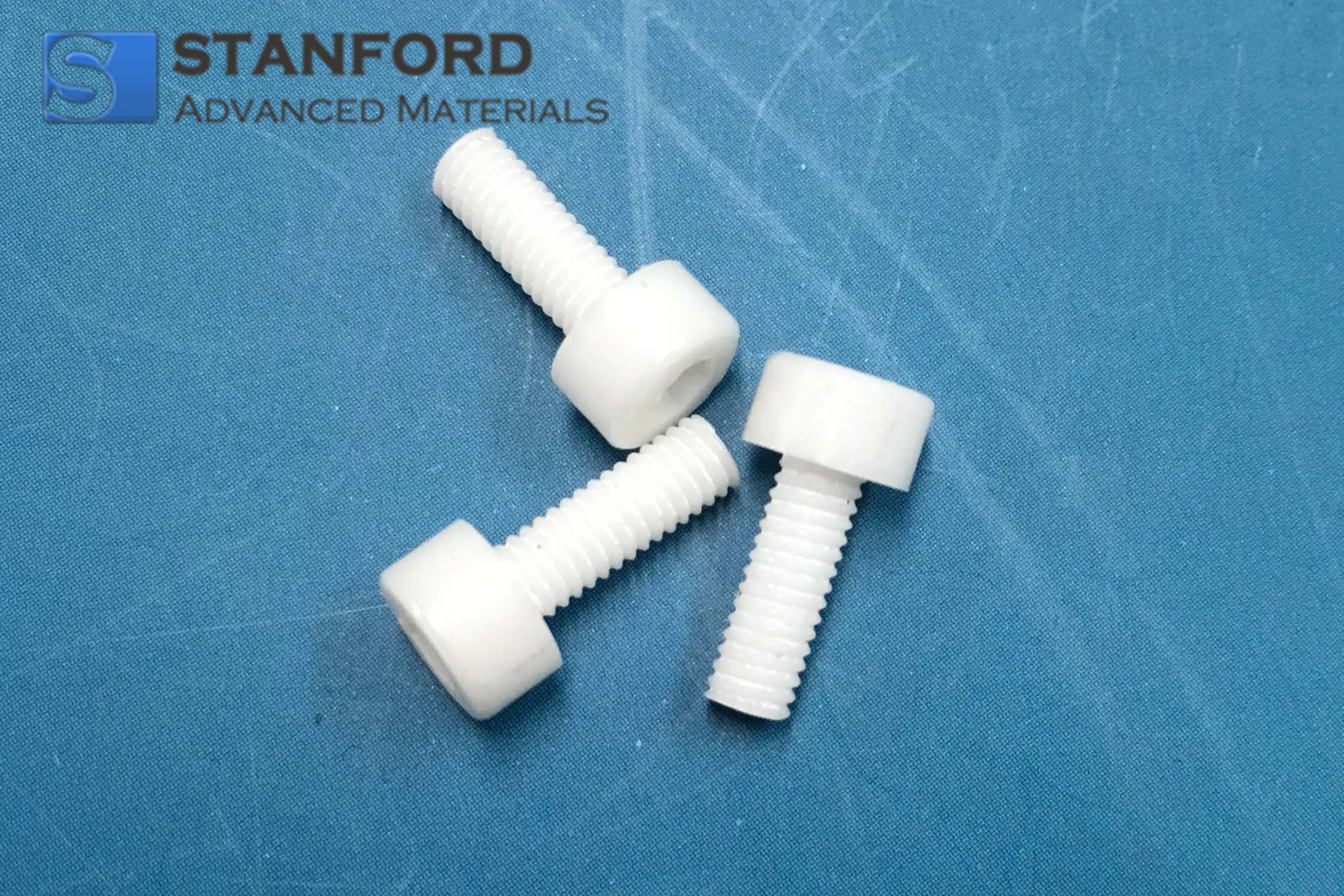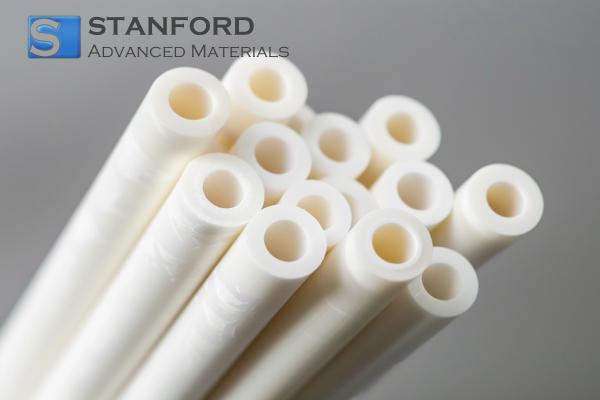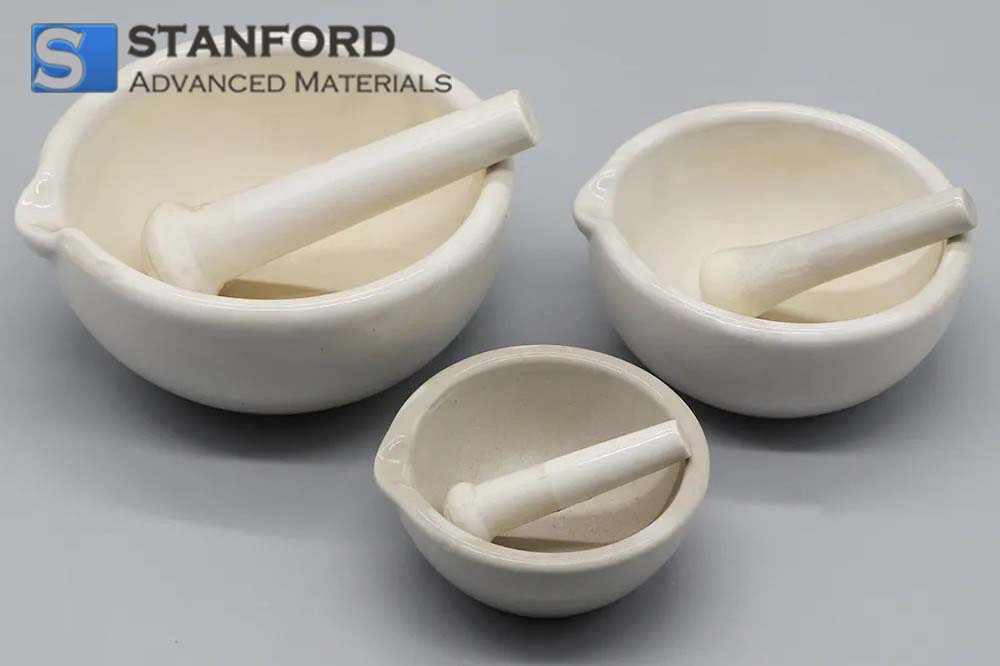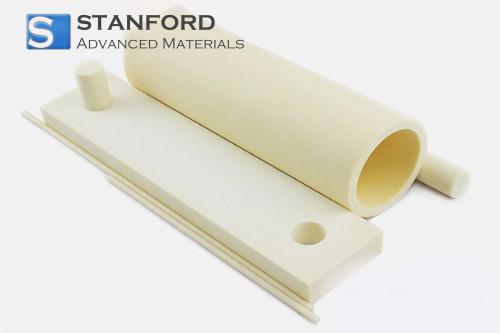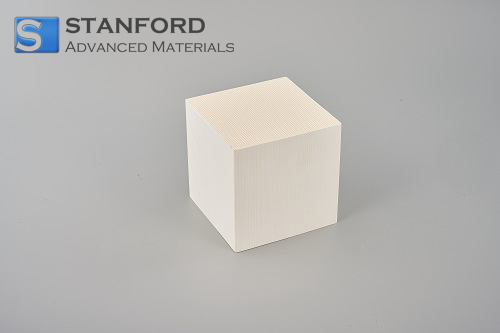Alumina Bar Description
Alumina Bar is developed and made of Aluminum Oxide (Al2O3). Alumina, a significant ceramic oxide, is crucial in fields like electronics, medicine, and more. With a high melting point (2054℃) and chemical stability, it's used in high-temperature and contamination-free reactions. Alumina's refractory nature lets it handle up to 1750℃ in various atmospheres. It's also a valued electrical insulator, often as a substrate for integrated circuits. With its affordability, robust properties, and broad applicability, Alumina finds use across diverse industries.
Alumina Bar Features
- High melting and boiling points
- good electrical insulation (1x1014to 1x1015Ω cm)
- strong hardness (15~ 19 GPa)
- Strong thermal shock resistance
- good corrosion and wear resistance
- bio-inert and food compatible
Alumina Bar Specification
|
Composition
|
UNIT
|
Al95
|
Al99
|
Al997
|
|
Al2O3 Content
|
%
|
95
|
99
|
99.7
|
|
Color
|
|
White
|
Ivory
|
Ivory
|
|
Tensile Strength
|
Kpsi
|
32
|
38
|
36
|
|
Flexural Strength
|
Kpsi
|
52
|
55
|
54
|
|
Compressive Strength
|
Kpsi
|
300
|
377
|
350
|
|
Density
|
g/cc
|
3.70
|
3.90
|
3.92
|
|
Hardness
|
HV, GPa
|
13.8
|
17.2
|
18
|
|
Thermal Conductivity
|
W/(m·K)
|
25
|
30
|
30
|
|
C.O.T.E.
|
In / In°C (x10^-6)
|
7.7
|
7.8
|
7.8
|
|
Working Temperature
|
°C
|
1500
|
1650
|
1750
|
|
Dielectric Constant
|
|
9.5
|
9.7
|
9.8
|
|
Volume Resistivity (25°C)
|
Ohm-cm
|
>10^14
|
>10^14
|
>10^14
|
Alumina Bar Applications
1. High-Temperature Furnaces: Alumina bars are used as structural components in high-temperature furnaces and kilns due to their ability to withstand extreme temperatures without deformation or degradation.
2. Wear-Resistant Parts: In industries such as mining and manufacturing, alumina bars are used as wear-resistant parts in equipment and machinery. Their hardness and durability make them ideal for components subjected to abrasive environments.
3. Electrical Insulation: Alumina bars are used as electrical insulators in high-voltage and high-temperature applications. Their excellent dielectric properties ensure reliable performance in demanding electrical environments.
4. Thermal Insulation: Due to their low thermal conductivity, alumina bars are used as thermal insulators in various high-temperature applications, helping to protect other components from heat and reduce energy loss.
5. Chemical Processing: In the chemical industry, alumina bars are used in reactors and processing equipment where high chemical resistance is required. They can withstand corrosive environments and maintain their integrity.
6. Metallurgical Applications: Alumina bars are used in metallurgical processes, including as support structures and containment for molten metals. Their high melting point and chemical stability make them suitable for these applications.
7. Semiconductor Manufacturing: Alumina bars are employed in the semiconductor industry for applications requiring high purity and thermal stability, such as in diffusion furnaces and wafer processing equipment.
8. Cutting Tools: Alumina bars are used to make cutting tools and inserts for machining hard materials. Their hardness and wear resistance enhance the performance and lifespan of these tools.
9. Biomedical Applications: In the biomedical field, alumina bars are used to manufacture prosthetics, dental implants, and other medical devices due to their biocompatibility and mechanical strength.
10. Aerospace Components: Alumina bars are utilized in the aerospace industry for components that require high strength, thermal stability, and resistance to wear and corrosion, such as engine parts and structural components.
11. Optical Applications: Alumina bars are used in optical applications, including as substrates for optical coatings and components in laser systems, due to their high purity and excellent surface finish.
12. Research and Development: Alumina bars are used in R&D for various experimental setups that require materials with high thermal and chemical stability, ensuring reliable and consistent results.
Alumina Bar Packaging
Our Alumina Bar is carefully handled during storage and transportation to preserve the quality of our product in its original condition.
Alumina Bar FAQs
Q1. What sizes and shapes are available for Alumina Bars?
Alumina bars come in various sizes and shapes, including custom dimensions to meet specific application requirements. Standard sizes are available for common uses, while custom manufacturing can provide specific lengths, widths, and thicknesses.
Q2: Can Alumina Bars be used in microwave applications?
Alumina bars are generally not recommended for microwave use as they can absorb microwave energy and become very hot, potentially leading to damage or hazards. Always consult the manufacturer's guidelines for specific applications.
Q3: What is the typical lifespan of an Alumina Bar?
The lifespan of an alumina bar depends on the specific application and operating conditions. Under normal use, they can last for several years. However, exposure to extreme temperatures, rapid temperature changes, and corrosive chemicals can affect their longevity.

